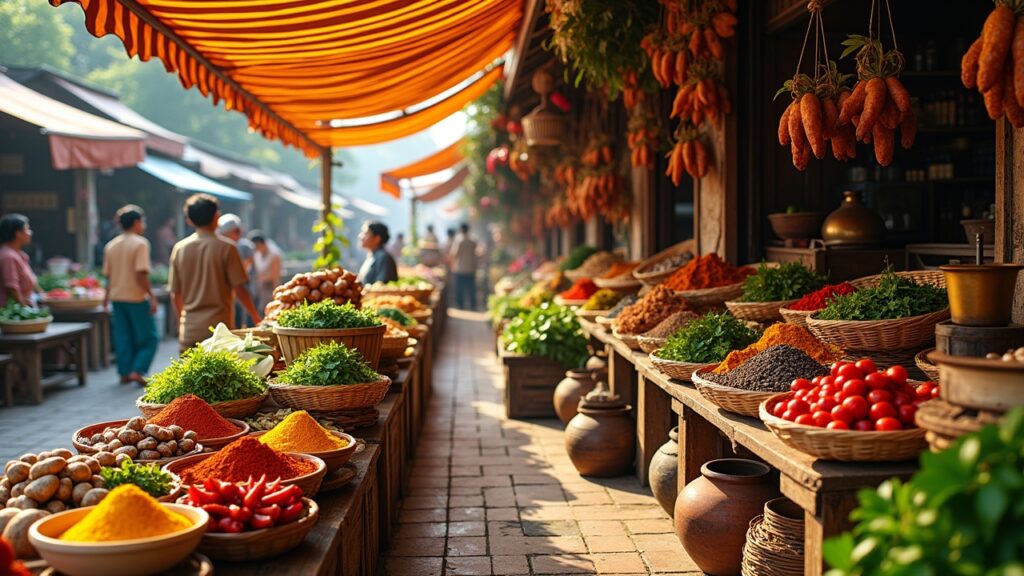Did you know that Vietnamese cuisine is considered one of the world’s most complex culinary traditions, with over 500 documented dishes? I definitely didn’t know that when I first attempted to make pho at home three years ago – and let me tell you, it was a disaster! My learning Vietnamese cooking journey has been filled with burnt spring rolls, oversalted broths, and more than a few kitchen meltdowns, but it’s also been incredibly rewarding.
Vietnamese cooking isn’t just about following recipes; it’s about understanding balance, patience, and embracing the art of layering flavors. Trust me, once you get the hang of it, you’ll never look at Asian cuisine the same way again!
My First Vietnamese Cooking Disaster (And What I Learned)

Picture this: me, standing in my kitchen at 2 AM, trying to salvage what was supposed to be authentic pho bo. The broth was murky, the noodles were mushy, and somehow I’d managed to make it taste like salty water. I was convinced Vietnamese cooking was just too complicated for someone like me.
But here’s the thing – that failure taught me my first major lesson about Vietnamese cuisine: it’s all about the fundamentals. You can’t rush a good bone broth, and you definitely can’t skip the aromatics. My mistake was trying to speed through a process that traditionally takes 12+ hours.
After that epic fail, I decided to start simple. Fresh spring rolls became my gateway drug into Vietnamese cooking, and honestly, they’re perfect for beginners.
Building Your Vietnamese Pantry (The Smart Way)
One of my biggest early mistakes was trying to buy every Vietnamese ingredient I’d ever heard of. My pantry looked like a confused Asian grocery store! Instead, I learned to focus on the essentials first.
Here’s what I wish someone had told me to start with:
- Fish sauce (nuoc mam) – This is your flavor foundation, no exceptions
- Rice vinegar – Essential for that tangy balance Vietnamese food is known for
- Fresh herbs – Cilantro, mint, and Thai basil are game-changers
- Rice paper – For those addictive spring rolls
- Tamarind paste – Trust me on this one
I remember spending $80 at the Asian market my first trip, buying ingredients I had no clue how to use. Now I build my pantry gradually, learning each ingredient’s purpose along the way.
Mastering the Art of Vietnamese Flavor Balance
This is where Vietnamese cooking gets really interesting – and where I struggled the most initially. Vietnamese cuisine is built on balancing five fundamental tastes: sweet, sour, salty, bitter, and spicy. Getting this balance right was like learning to juggle while riding a bike.
My breakthrough moment came when I was making caramelized pork (thit kho) for the third time. Instead of following the recipe exactly, I started tasting and adjusting. A little more fish sauce here, a touch more palm sugar there – suddenly, everything clicked!
The secret isn’t in exact measurements; it’s in developing your palate. I started keeping a small notebook of flavor adjustments that worked, which sounds nerdy but totally saved my cooking game.
Common Vietnamese Cooking Mistakes (That I’ve Made So You Don’t Have To)
Oh boy, where do I even start? I’ve probably made every Vietnamese cooking mistake in the book, but here are the big ones that’ll save you some headaches:
Overcooking the rice noodles – These things go from perfect to mushy in like 30 seconds. I learned this the hard way with many ruined bowls of bun bo hue.
Using the wrong herbs – Not all mint is created equal! Thai basil and regular basil are completely different, and using the wrong one can throw off your entire dish.
Rushing the broth – Vietnamese broths need time to develop depth. I used to think I could shortcut this with bouillon cubes. Spoiler alert: I could not.
The most important lesson I learned was that Vietnamese cooking rewards patience and attention to detail. It’s not necessarily difficult, but it does require respect for the process.
My Go-To Vietnamese Dishes for Beginners
After three years of trial and error, these are the dishes I recommend starting with. They’re forgiving, delicious, and will build your confidence:
Vietnamese fresh spring rolls (goi cuon) are perfect for beginners because you can see everything you’re doing. Plus, if you mess up the rolling technique, they still taste amazing! I probably went through 50 rice papers before I got the hang of it.
Vietnamese iced coffee (ca phe sua da) might seem too simple, but getting the ratios right teaches you about balance. And honestly, you’ll need the caffeine for all that cooking practice.
Lemongrass beef (bo nuong xa) was my first real Vietnamese cooking victory. The marinade is straightforward, and grilling is hard to mess up completely.
Where My Vietnamese Cooking Journey Goes Next
Learning Vietnamese cooking has been one of the most rewarding challenges I’ve taken on. Sure, I still mess up sometimes – last week I accidentally made my pho broth so salty it was basically soup-flavored ocean water. But that’s part of the journey!
The key is to stay curious and keep experimenting. Every mistake teaches you something new about flavors, techniques, or ingredients. And when you finally nail that perfect bowl of pho or get your spring roll wrapping technique down pat, the satisfaction is incredible.
Remember, Vietnamese cooking is deeply rooted in tradition, but that doesn’t mean you can’t make it your own. Adapt recipes to your taste, experiment with ingredients, and most importantly, have fun with it. If you’re looking for more culinary adventures and cooking tips, check out more posts on Chou Iu – I’d love to share more of my kitchen disasters and victories with you!



Pingback: Life-Changing Weekend Getaways To Better Discover Vietnam